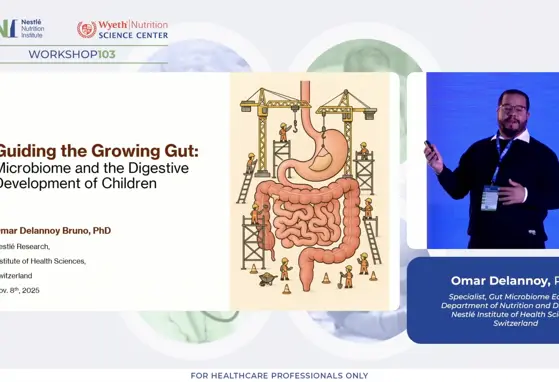WHO issues guidance on emerging double threat of childhood obesity and undernutrition in low and middle income countries
WHO's Essential Nutrition Actions
To help countries close these policy gaps, WHO has issued a consolidated package of 24 Essential Nutrition Actions, which outline the most effective ways countries can improve their peoples’ nutritional status by preventing both undernutrition and overweight. There are many factors during pregnancy and infancy that can affect an older child’s and an adult’s weight.
Interventions include:
- Improve nutrition of pregnant and breastfeeding women;
- Encourage early initiation of breastfeeding, exclusive breastfeeding for the first 6 months, then continued breastfeeding up to 2 years;
- Promote appropriate solid foods for young children;
- Provide micronutrient supplements and fortified foods, when needed.
Dr Francesco Branca, Director, WHO’s Department of Nutrition for Health and Development says:
“To avoid a massive explosion of nutrition problems in the next generation, policy makers urgently need to give more attention to improving the nutritional status of pregnant women and adolescent girls who will become mothers of the next generation.”
“Increasingly, we find overweight children living in countries where undernutrition is also still an issue. While it is vital to maintain efforts to reduce undernutrition, the world needs to do much more to prevent and care for the growing numbers of people that are overweight or obese and living in low- and middle-income countries.”
Causes of overweight and undernutrition
These conditions – undernutrition, obesity and overweight – are forms of malnutrition with their causes and consequences closely linked to inadequacies in the food system. A food system that does not deliver a sufficient amount of quality food can lead both to poor growth and to excess weight gain. A child who has grown poorly in his first years of life may turn into a short but overweight adolescent and then later in life, develop chronic diseases.
“To avoid a massive explosion of nutrition problems in the next generation, policymakers urgently need to give more attention to improving the nutritional status of pregnant women and adolescent girls who will become mothers of the next generation,” adds Dr Branca.
Essential Nutrition Actions address many health issues
Many policies to address the other half of the “double burden” of malnutrition – obesity and diet-related diseases such as diabetes, heart disease and stroke – are much further behind, especially in Africa and South-East Asia. And even when policies to address obesity exist at a national level, they are often not implemented at provincial or district level. Only one third of surveyed countries regulate the marketing of foods to children, and only a few have taken measures to reduce salt or transfats in foods.
Focusing on these essential nutrition actions, countries can reduce infant and child mortality, improve growth and development, and improve productivity. Countries such as Brazil, Ethiopia, and Peru and India’s second most populous state, Maharashtra, have achieved such successes as a result of implementing these actions.
Worldwide, more than 100 million children under five years of age are underweight; 165 million are stunted i.e. have a low height for their age (which is a better indicator of chronic undernutrition). An estimated 35% of all deaths among children under five are associated with undernutrition. At the same time, some 43 million children under five are overweight or obese.
“With the 2015 deadline for the Millennium Development Goals less than 1000 days away, these reports provide countries and development partners with urgently needed analysis of what still needs to be done and consolidated guidance on how to get there,” says Dr Branca.
A Lancet Series on Maternal and Child Nutrition is being published on 6 June. It includes an analysis of the impact of various nutrition interventions on the health of women and children. The Series also gives an estimate of what it would cost to fill some of the gaps identified in the Global Nutrition Policy Review ($12.6 billion per year including all supplies and staff costs).
Notes to Editors
In May 2012, the World Health Assembly adopted a series of nutrition-related goals which countries are working towards achieving by 2025:
- 40% reduction in the number of children under 5 who are stunted (low height-for-age);
- 50% reduction in the number of women of reproductive age with anaemia;
- 30% reduction in the number of babies with low birth weight;
- no increase in the proportion of children who are overweight;
- increase the rate of exclusive breastfeeding in the first 6 months to at least 50% (currently 38%); and
- reduce and maintain the proportion of children who are wasted (low weight-for-height) to less than 5% (currently 8%).
Links : http://www.who.int/mediacentre/news/notes/2013/obesity_undernutrition_20130605/en/index.html
If you liked this post you may also like

Mindful Microbes: The Interplay Between Environment, Gut Microbiome, Brain, and Behavior

Exploring the Crosstalk: Nutrition, Microbiome, and Cardiometabolic Health

Guiding the Growing Gut: Microbiome and the Digestive Development of Children

Nourishing the Microbiome at Preschool age: Dietary influences from infancy to present